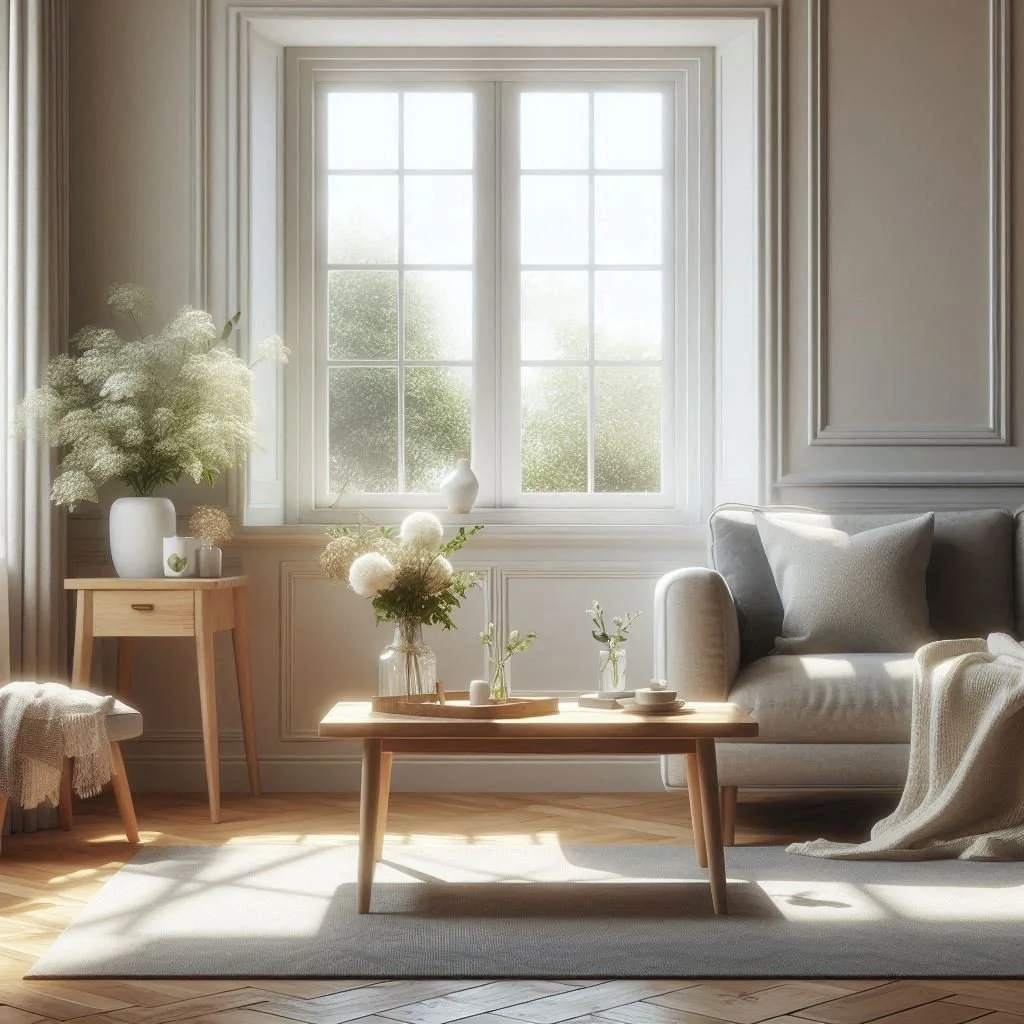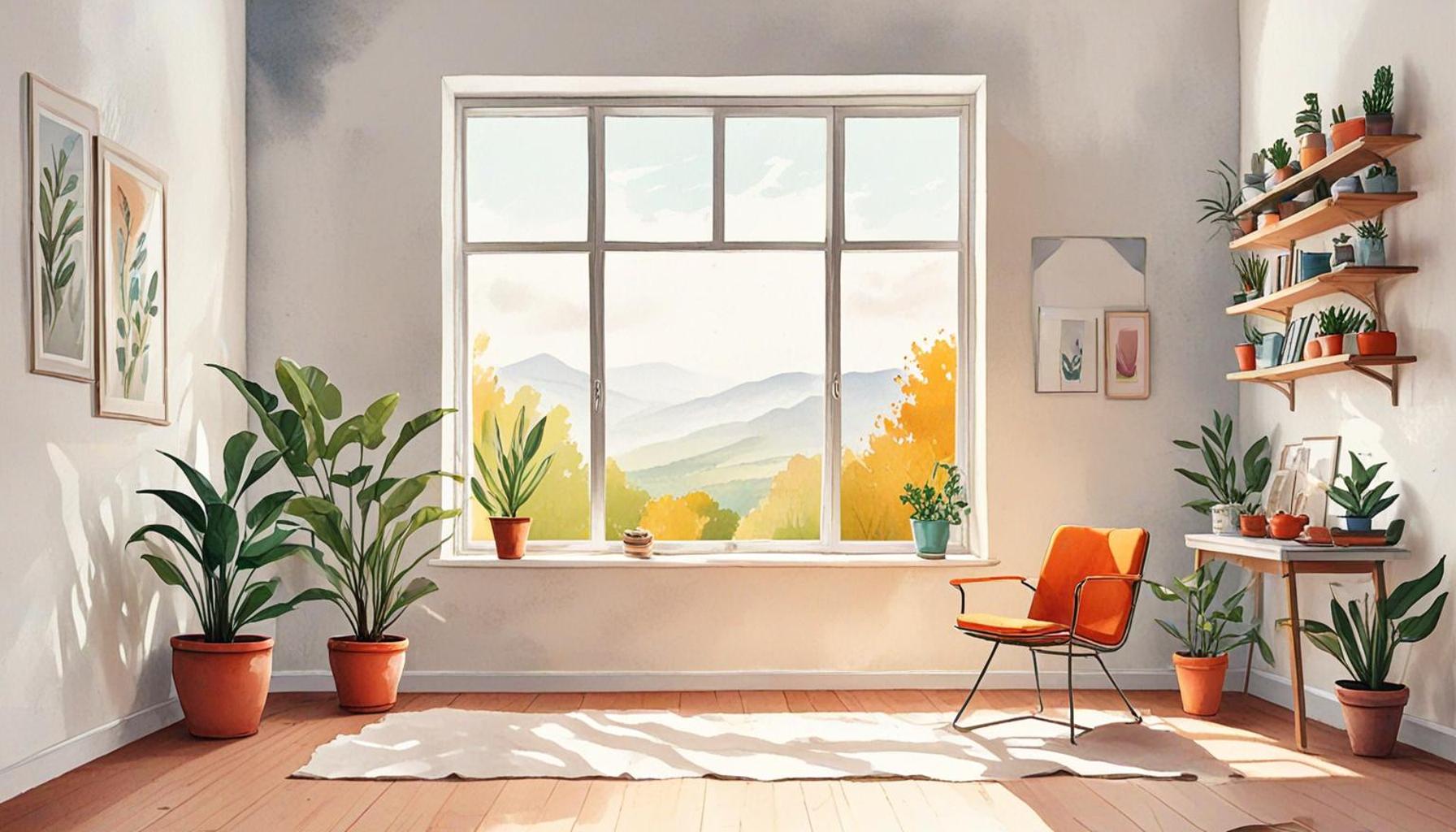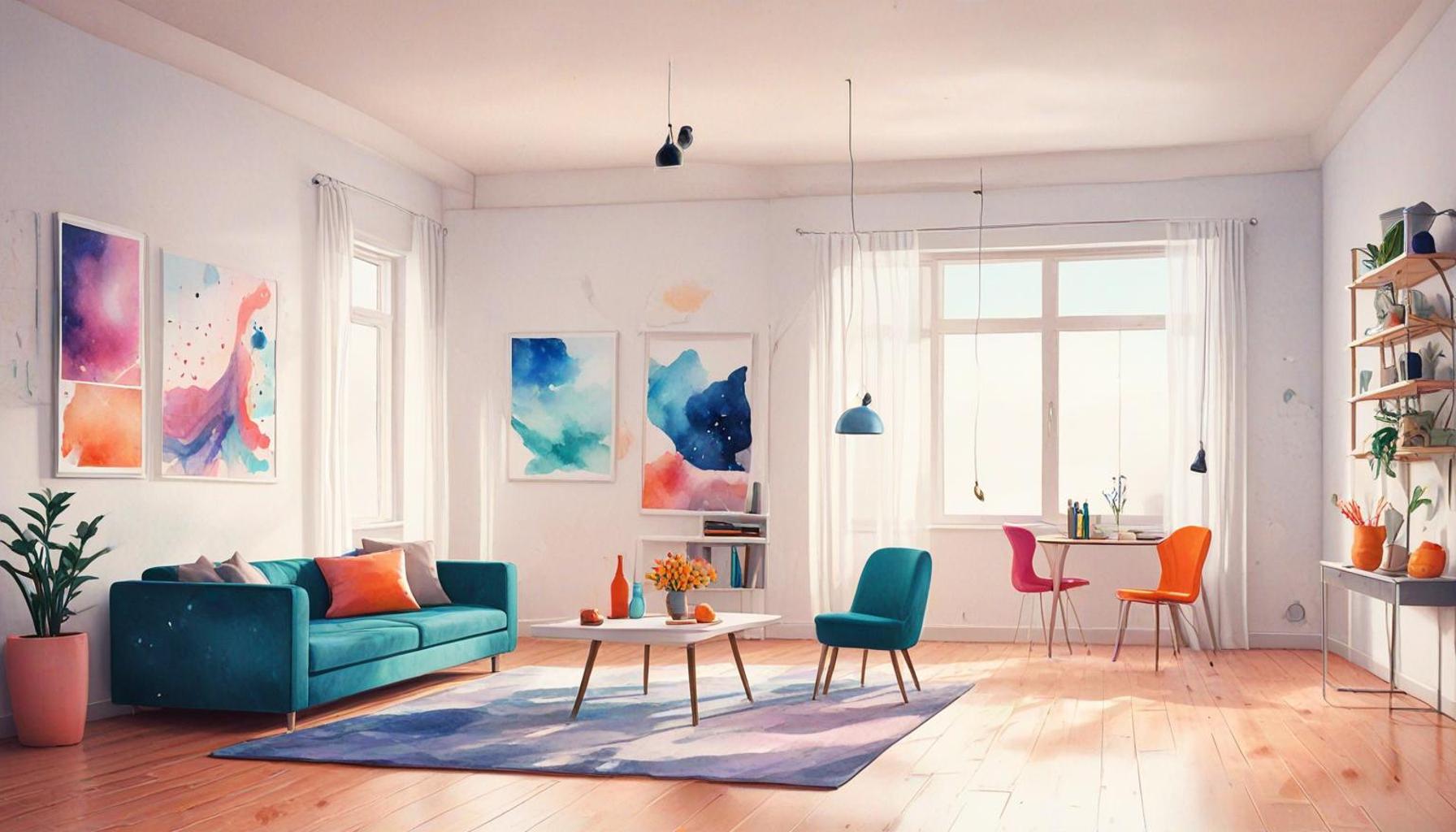How to Create Efficient Spaces at Home with Minimalism Principles

Creating Efficient Spaces at Home
The concept of minimalism isn’t just a trend; it’s a lifestyle choice that can transform your living environment. By adopting minimalism principles, you can create spaces that are not only efficient but also bring a sense of peace and clarity to your home. It’s about doing more with less, and implementing these principles effectively can change not just your space, but your perspective on life.
One of the first steps in this journey is to declutter your living space by removing items that don’t serve a purpose. Take a look around your home; how many possessions do you own that sit idly, gathering dust? Implementing the “one in, one out” rule can be beneficial: for every new item you introduce into your space, consider letting go of another. This practice not only frees up physical space but also reduces mental clutter. For example, if you love to read but find you have hundreds of books, consider donating those you won’t revisit. This can help create a cozy reading nook that invites relaxation.
Maximizing functionality is another critical principle of minimalism. Choose multi-purpose furniture that fits your lifestyle. Consider a coffee table with built-in storage or a sleeper sofa for accommodating guests without needing an extra bedroom. Such furniture pieces are not just practical; they can also make your home feel larger and more open, allowing for free movement and interaction. The use of vertical space can also enhance efficiency. Floating shelves can display decor while keeping surfaces clear, ensuring that a small space feels more expansive.
Next, it is vital to focus on quality over quantity by investing in durable, timeless pieces. A well-crafted, classic sofa may initially cost more than a cheaper alternative but can withstand years of use while maintaining its appearance and comfort. This leads to less waste over time and a more enjoyable living environment. Better materials can also mean fewer allergens, contributing to a healthier home.
The ultimate goal of minimalism is to streamline your surroundings, creating an atmosphere that enhances well-being. Each item you keep should either spark joy or serve a functional role, allowing for a more mindful approach to what you own. This is not only practical but liberating, as it opens up your space and your mind. By curating your belongings thoughtfully, you can create a home that truly reflects who you are and what you value.

Benefits of Minimalism
- Improved organization: With fewer items to manage, it becomes easier to maintain a tidy environment. This can lead to less stress and a more comfortable living experience.
- Enhanced focus: A minimalist environment minimizes distractions, allowing for better productivity, whether you’re working from home or pursuing hobbies. Studies show that organized spaces can foster creativity and concentration.
- Increased tranquility: A clean, uncluttered space fosters a calm state of mind. Research indicates that environments cluttered with items can produce stress and anxiety, while streamlined aesthetics contribute to inner peace.
By applying these minimalism principles, you can celebrate simplicity while maximizing your home’s efficiency. Start small, perhaps by tackling one room at a time, and gradually embrace the harmonious lifestyle that minimalism has to offer. This intentional approach will not only transform your living space but can also lead to a more fulfilling, less chaotic life.
DON’T MISS OUT: Click here to learn more
Embrace the Art of Decluttering
To truly harness the principles of minimalism, the decluttering process is where your journey begins. As you tackle this daunting task, it’s essential to assess each item in your home with a critical eye. The goal is to create a living environment that reflects only what you truly need or love. A popular approach is the KonMari Method, developed by Marie Kondo, which encourages individuals to keep only those items that “spark joy.” This method not only helps in decluttering but also instills a sense of appreciation for the items you choose to retain.
As you move through each room, categorize your belongings into keep, donate, and discard piles. This clear division can help simplify the decision-making process. According to research, the average American household contains over 300,000 items, from kitchenware to clothing. By reducing this number, you can reclaim parts of your home and create spaces that enhance both function and tranquility.
Strategic Space Utilization
Another key element in creating efficient spaces is the strategic use of area and layout. Consider the flow of your space: is it conducive to easy movement and accessibility? Open floor plans, which have become increasingly popular in American homes, can benefit greatly from minimalism principles. By limiting furniture and decor, these spaces can breathe and feel more expansive.
Moreover, be mindful of how you arrange furniture. For example, a living room can become more inviting and functional by angling sofas to create conversation zones, rather than merely lining furniture against the walls. This layout not only maximizes space but also encourages connection among family and friends.
Utilizing Natural Light
Natural light is another critical component of efficient spaces. By allowing sunlight to fill your home, you enhance its aesthetics and create an inviting atmosphere. Avoid heavy drapes and opt for light, airy window treatments that allow light to filter in while offering some privacy. A well-lit space can psychologically make an area feel larger and more open, complementing your minimalist design.
Furthermore, consider implementing mirrors strategically to amplify light and create the illusion of depth within a room. This simple design trick can turn small, cramped areas into bright, lively spaces, aligning perfectly with the principles of minimalism.
Creating Design Harmony
- Choose a cohesive color palette: Select a few colors that blend well together to create a harmonious atmosphere. Minimalist spaces usually incorporate neutral tones with subtle accents.
- Limit decorative items: Instead of crowding surfaces with trinkets, invest in a few statement pieces that convey your style and personality.
- Incorporate natural elements: Bringing plants into your home not only adds visual appeal but also contributes to air quality and mental well-being.
By embracing these techniques, you are not just creating efficient spaces; you are setting the stage for a more harmonious existence within your home. The principles of minimalism invite a sense of calm, allowing you to focus on what truly matters. Remember, it’s not simply about having less; it’s about making room for more of what brings you joy and fulfillment in life.
| Advantage | Description |
|---|---|
| Increased Clarity | Minimalism promotes simplicity, which can lead to a clearer mind and enhanced focus in your daily activities. By reducing clutter, every item serves a purpose, making it easier to maintain a productive atmosphere. |
| Enhanced Functionality | When adhering to minimalism principles, spaces are designed for efficiency. This means that furniture and layout support daily routines, creating a seamless flow and allowing individuals to navigate their spaces more effectively. |
Incorporating minimalism into home design not only enhances aesthetics but also enriches the living experience. The notion of decluttering isn’t about having less but rather about making room for what’s truly valuable. For instance, focusing on multi-functional furniture can transform a small apartment by maximizing utility without overcrowding. Imagine a coffee table that also serves as a workspace or a sofa bed that accommodates guests—all while maintaining a clean and chic look.Moreover, integrating nature through biophilic design principles can complement minimalism beautifully. Bringing in plants or natural light contributes to mental well-being and further emphasizes the open, adaptable spaces minimalism advocates. This approach doesn’t merely create efficient spaces; it enriches the quality of life by fostering tranquility and balance within your home environment. Each piece in a minimalist home speaks a story, bringing joy and function into clear sight.
DIVE DEEPER: Click here for practical organization tips
Mindful Purchasing: The Key to Longevity
One of the cornerstones of minimalism is learning the art of mindful purchasing. In today’s consumer-driven society, it’s easy to fall into the trap of acquiring excess items that eventually become clutter. To create efficient spaces in your home, it’s essential to adopt a mindful approach to shopping. Before making a purchase, ask yourself: “Do I truly need this?” or “Will this item add lasting value to my life?” This self-reflection can prevent impulse buys and help maintain a clutter-free environment.
Moreover, consider the quality over quantity approach. Investing in well-crafted, durable pieces not only reduces the frequency of replacements but also aligns with minimalist values. For instance, a single high-quality sofa can be more impactful and sustainable than multiple cheaper alternatives that quickly wear out. This principle can extend to clothing as well; a capsule wardrobe consisting of versatile, timeless pieces can simplify your daily routine while still maintaining style.
Functional Multi-Purpose Furniture
Incorporating multi-functional furniture is another effective way to create efficient spaces while adhering to minimalist principles. Pieces such as storage ottomans, sofa beds, or modular shelving units not only save space but also enhance functionality without overwhelming a room. By selecting furniture that serves more than one purpose, you can maximize utility while minimizing clutter.
This approach is especially beneficial in smaller living spaces, where every square foot counts. According to the National Association of Home Builders (NAHB), approximately 30% of Americans live in apartments or condominiums, where space constraints are commonplace. Therefore, investing in furniture that combines functionality and style can significantly improve your home’s efficiency and aesthetic appeal.
Incorporating Technology Wisely
With the rise of smart home technology, integrating devices that simplify tasks can promote a more organized lifestyle. Smart home assistants and programmable devices can streamline everything from lighting to temperature control, making it easier to maintain a tranquil environment. As we embrace the digital age, being selective about the technology you incorporate into your space is vital. Choose tools that enhance your living experience without leading to digital clutter.
Moreover, implementing solutions for managing your gadgets can further the minimalist aesthetic. For example, investing in cable management systems can keep unsightly wires hidden and reduce visual chaos, while wireless charging pads eliminate the need for multiple chargers scattered throughout your home.
Mindful Maintenance and Cleaning Routines
- Create a cleaning schedule: Establishing regular cleaning routines ensures that your living spaces remain free from clutter and chaos.
- Practice the one-in, one-out rule: For every new item introduced into your home, consider removing an existing item. This practice helps maintain a balanced environment.
- Utilize storage solutions: Invest in sleek, minimalist storage options that can enhance your space without overwhelming it.
By focusing on maintaining your living space, you contribute to an ongoing minimalistic lifestyle. The key is to integrate these practices organically into your routine, ensuring that your home continues to be a reflection of your values and aspirations. By embodying the philosophy of minimalism in your purchasing habits and daily routines, you’re not just improving efficiency—you’re creating a sanctuary that resonates with peace and fulfillment.
DISCOVER MORE: Click here to enhance your productivity
Conclusion: Embracing Minimalism for a Harmonious Home
In a world where clutter can easily seep into our lives, creating efficient spaces at home through the principles of minimalism is not just a trend but a transformative lifestyle choice. By prioritizing mindful purchasing, you can eradicate unnecessary items and invest in pieces that truly enhance your living experience, ensuring that each purchase holds significant value. Furthermore, embracing multi-functional furniture allows you to optimize small spaces without sacrificing style or functionality, particularly beneficial for those living in densely populated areas where every square foot matters.
Moreover, the integration of technology should be approached with discernment. Adopting smart devices that streamline your daily activities can significantly enhance efficiency while keeping your home organized and aesthetically pleasing. Establishing mindful maintenance routines through scheduled cleaning and the practice of the one-in, one-out rule fosters a continual cycle of decluttering and organization, making your home a living reflection of your values and aspirations.
The journey toward minimalism is personal and ongoing. It invites you to reassess your relationship with your belongings and makes space—not just physically, but also mentally and emotionally. As you implement these principles, you will likely discover that a simple, minimalistic space not only creates efficiency but also cultivates a profound sense of peace and fulfillment in your daily life. Therefore, take that first step today; a harmonious home awaits you just beyond the clutter.


